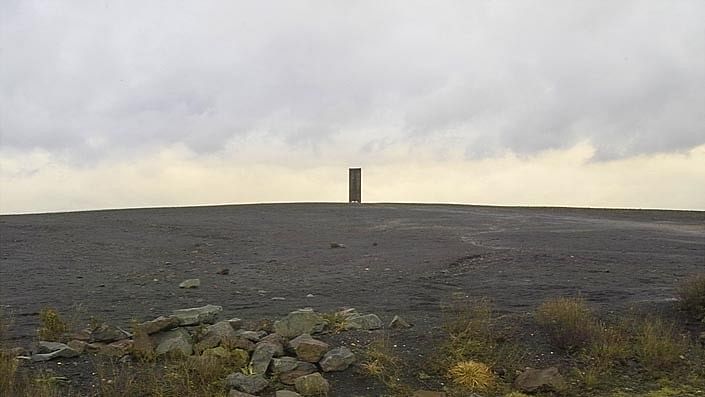
'Bramme' by artist Richard Serra
Credit: WIki Commons
The recent demise of Richard Serra, one of the most famous sculptors of the 20th century, known for his monumental works in the public space, reminds us of how art can be perceived in multiple ways, more so when in the public arena and can sometimes lead to substantial debate. In general, aesthetics, safety, site specificity and relevance to the surrounding space and the community are perhaps some of the key elements to be taken into consideration while designing public art.
Serra’s installations in the public space focused on the topography of the land, were site-specific and employed scale to create enormous works that invited people to walk around and within the artwork, to view the sky and the surroundings through it — altering one’s sense of perception.
The sculptural installations, looming in their urban environment, made of industrial material, often using Cor-Ten steel with a unique rough texture on the surface, presented a counterpoint to the landscape. Unfortunately, one of his works ‘Tilted Arc’, a 120-foot-long, 12-foot-high wall of curved steel placed across the Federal Plaza in lower Manhattan in 1981, was perceived to be an eyesore by several people and became a controversial piece. It was finally dismantled into pieces and was put into storage in 1989.
Similarly, Anish Kapoor, the Indian-born British artist, whose ‘Cloud Gate’ is a well-known landmark in Chicago, courted controversy with ‘Dirty Corner’, nicknamed ‘The Queen’s Vagina’ due to its suggestive form — a large sculpture that was installed in the gardens of the Versailles Palace in 2015. The work was vandalised with graffiti several times and was later removed from this location.
There are several such examples where the artworks in public spaces have sparked a protest, have been vandalised or resulted in lawsuits. Art itself is open to interpretation and can lead to several readings, and while context is important, its provocative nature or lack of aesthetics can become points of contention.
Closer home, in 2012, four sculptures were installed at a few road junctions in Bangalore. As part of a private-public partnership agreement, the civic authorities commissioned a cement company to design and install these public artworks. One of them featured an array of animals — a rhinoceros, a tortoise, a large bird and a cat, all perched on top of an elephant. The idea behind these installations was apparently to replicate the beautiful public art seen in Europe. However, the works drew a lot of flak from the artist community and the public for their aesthetics and design (or their lack of it).
Several such instances raise many questions regarding the ‘beautifying’ aspect of public art. Should public art be used to beautify the landscape? Or, should it be provocative? Who is responsible for the decision-making while commissioning the art? If it is taxpayers’ money, do they have a say in it? There may not be clear answers to these, but public awareness about art, accountability of the commissioning body and freedom of creative expression are some of the parameters that seem to be relevant to the discussion.
Apart from these considerations, the safety aspect of the artwork is paramount — in 2006, a massive inflatable sculpture ‘Dreamspace V’ by Maurice Agis, a British sculptor and artist, turned into a catastrophe. It loosened from its moorings when the ropes snapped and two people died while several others were injured. Agis had been making public art for four decades before the incident and was passionate about making contemporary art accessible. Usually, structural safety and site inspections are a part of the art installation process and there is strict prior scrutiny. In this case, there were concerns that there might have been foul play and the ropes may have been tampered with.
DabHand is your fortnightly art world low-down.
The author is a Bengaluru-based art consultant, curator and writer. She blogs at Art Scene India and can be reached at artsceneinfo@gmail.com